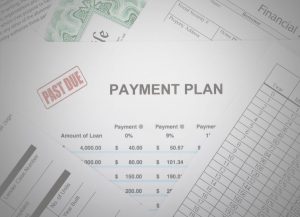If you aren’t saving as much money as you would like, there could be some underlying issues that need to be addressed. I talk to plenty of clients who tell me they “should” have hundreds of dollars left over each month that could be saved, but somehow, they don’t. It’s not easy to spot a savings problem, but it can make a huge difference!
Most people can’t take a look in the mirror to see when something isn’t right. I’m sharing a few signs you may have a problem with saving money. Once you can spot a savings problem, you can start making changes to turn the problem around. If you do any of the following, you may have a savings problem that needs to be fixed!
#1 You don’t know what you could be saving
Guess what? If you don’t budget your money, you don’t know what you could be saving month over month. This means that you likely aren’t saving much at all, because you think you can’t afford to, or you spend more than you think. Regardless, without a budget, you don’t know what your savings potential is.
Nine times out of ten, people know what they bring home and what their fixed expenses are, but the variable expenses eat up the remaining profit. When you have a budget, you can see exactly what income you have left over for savings and variable/discretionary spending. Once you know this information, you will know exactly what you can afford to save.
When you know exactly what you can afford to save, you can make sure savings happens first, this moves us to savings problem number two.
#2 Your savings transfers are not automatically scheduled
Automatic savings transfers, whether directly from your paycheck to savings, or from your checking to savings, can be a huge help for saving consistently. First of all, automatic transfers take the pressure off of you to remember to save money. Second, you can set your transfers up to come automatically around payday. This allows you to pay yourself first, then live off the rest.
Before you get your automatic transfers scheduled, it’s important to know what you can truly afford to save each month. There’s nothing worse than putting too much into savings, only to have to take it out because you forgot about a few bills. Get your budget set up, then designate your savings amount.
#3 You use credit cards for large purchases, without paying them off
Another sign of a savings problem is using credit cards for large purchases, without the ability to pay the card off immediately after. What I mean is that if you don’t have money saved for a large purchase, where you could use the cash in your savings account, you probably shouldn’t be buying it.
When you don’t have enough in savings, or you aren’t saving money consistently, it can be easy to rely on credit cards to help you with major purchases (or any purchases for that matter). This is what can get people into a lot of trouble. Credit card debt can be extremely expensive. If you need to make a large purchase, start saving for it as soon as possible.
#4 When your income increases, your spending increases
It’s normal for people to increase their cost of living when their income increases. Whether it’s a raise or a new job, more money can come with more expenses. But, it doesn’t have to. If you were able to survive on your previous income, there should be no reason to increase your cost of living just because you now have more to spend.
This can be a major sign of a savings problem, because you are spending more, just because you are making more. True money management comes with the ability to live on less. If you are making more, you should ultimately be saving more – not spending more. Learn more in the article The Rules of Frugal Living.
Even those making $100,000 or more annually struggle with this. If you can’t budget your money properly making $40,000, making significantly more is not going to solve your problems…just saying. If you need more personalized assistance, seek a coach! I work with women one-on-one to help them budget what they have. Schedule a free consultation with me to learn more.
#5 You indulge in things you like, but don’t have an emergency fund
I was that girl once. That girl who would take trips with friends, then come home and not be able to pay rent. I was that girl who wanted to “live life” and didn’t think about my responsibilities. This is a major sign of a savings problem. If you are indulging in all of the things you love to do, but wouldn’t be able to cover an emergency, you need to change.
In fact, two-thirds of Americans would struggle to come up with $1000 for an emergency. Your emergency fund should be saved before any “fun” spending takes place. If you have significant amounts of debt, then your emergency fund should be $1000 before focusing on knocking that debt out. If you don’t have debt, your emergency fund should be 3-6 months’ worth of expenses.
Make building an emergency fund a top financial goal. You don’t want to regret buying things and taking trips when a true financial emergency comes up. Instead, save for your emergencies, then go have a little fun. Life isn’t about sitting at home all day, but it is about being responsible, especially in your finances.
Related: 5 Steps to Take if You Can’t Seem to Save
Saving money doesn’t have to be as hard as it seems. Small tweaks and changes to your habits and routines can make a world of difference. If you have any of the signs above or a savings problem in general, seek to get better! You deserve financial freedom, but you have to work for it. Do you struggle with saving? What issues do you have with saving consistently? Post a comment below to share.






1 thought on “How to Spot a Savings Problem”
I work through these things with clients in my one-on-one program. Sometimes, it’s not as easy as one thinks to spot a problem, and then work to fix it!